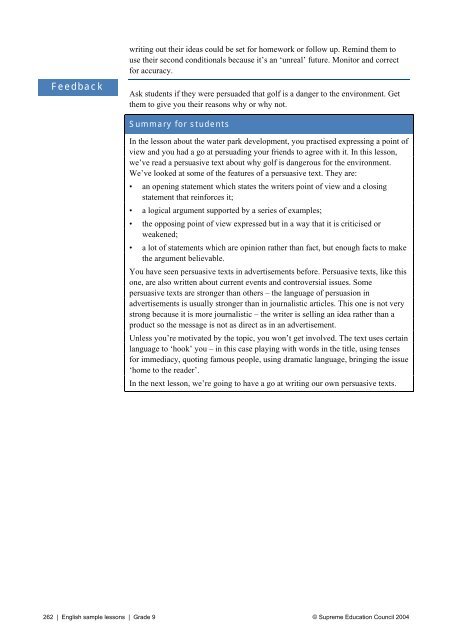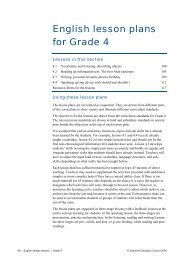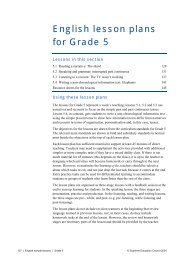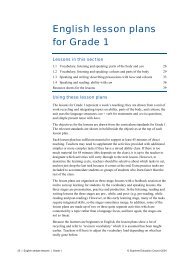English lesson plans for Grade 9
English lesson plans for Grade 9
English lesson plans for Grade 9
- No tags were found...
You also want an ePaper? Increase the reach of your titles
YUMPU automatically turns print PDFs into web optimized ePapers that Google loves.
Feedbackwriting out their ideas could be set <strong>for</strong> homework or follow up. Remind them touse their second conditionals because it’s an ‘unreal’ future. Monitor and correct<strong>for</strong> accuracy.Ask students if they were persuaded that golf is a danger to the environment. Getthem to give you their reasons why or why not.Summary <strong>for</strong> studentsIn the <strong>lesson</strong> about the water park development, you practised expressing a point ofview and you had a go at persuading your friends to agree with it. In this <strong>lesson</strong>,we’ve read a persuasive text about why golf is dangerous <strong>for</strong> the environment.We’ve looked at some of the features of a persuasive text. They are:• an opening statement which states the writers point of view and a closingstatement that rein<strong>for</strong>ces it;• a logical argument supported by a series of examples;• the opposing point of view expressed but in a way that it is criticised orweakened;• a lot of statements which are opinion rather than fact, but enough facts to makethe argument believable.You have seen persuasive texts in advertisements be<strong>for</strong>e. Persuasive texts, like thisone, are also written about current events and controversial issues. Somepersuasive texts are stronger than others – the language of persuasion inadvertisements is usually stronger than in journalistic articles. This one is not verystrong because it is more journalistic – the writer is selling an idea rather than aproduct so the message is not as direct as in an advertisement.Unless you’re motivated by the topic, you won’t get involved. The text uses certainlanguage to ‘hook’ you – in this case playing with words in the title, using tenses<strong>for</strong> immediacy, quoting famous people, using dramatic language, bringing the issue‘home to the reader’.In the next <strong>lesson</strong>, we’re going to have a go at writing our own persuasive texts.262 | <strong>English</strong> sample <strong>lesson</strong>s | <strong>Grade</strong> 9 © Supreme Education Council 2004
















